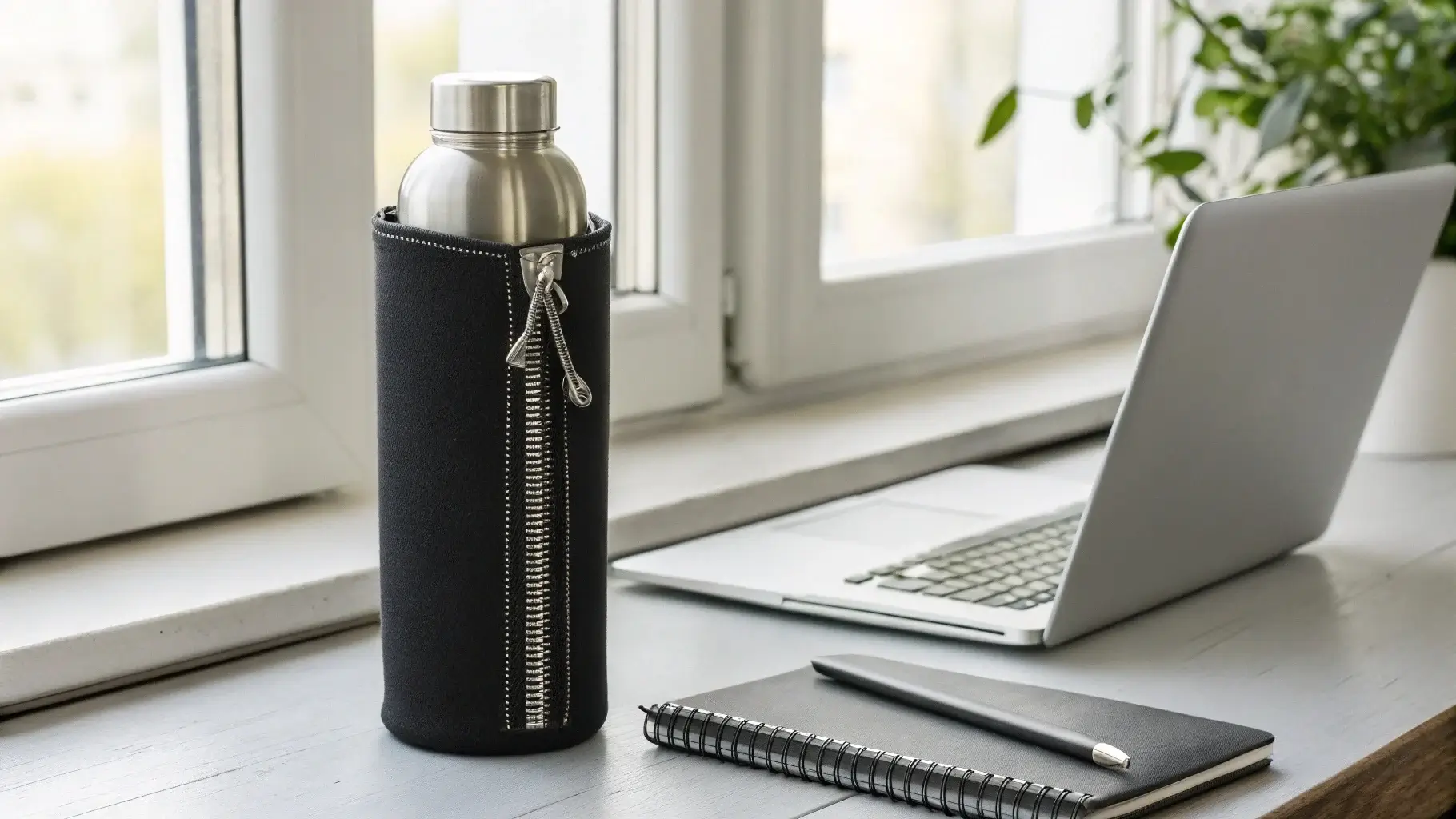
You want a better way to keep your drinks cold and your hands dry. I provide an easy fix that boosts comfort.
An insulated water bottle holder1 is a protective sleeve. It is often made of neoprene or related materials. It maintains drink temperature and reduces condensation.
Keep reading to see why this matters and how it helps.
What Does An Insulated Water Bottle Mean?
You crave a leak-free, temperature-controlled bottle. I bring a metal design that meets your expectations.
An insulated water bottle2 includes dual walls that trap temperature. It prevents heat transfer and keeps drinks fresh for hours.
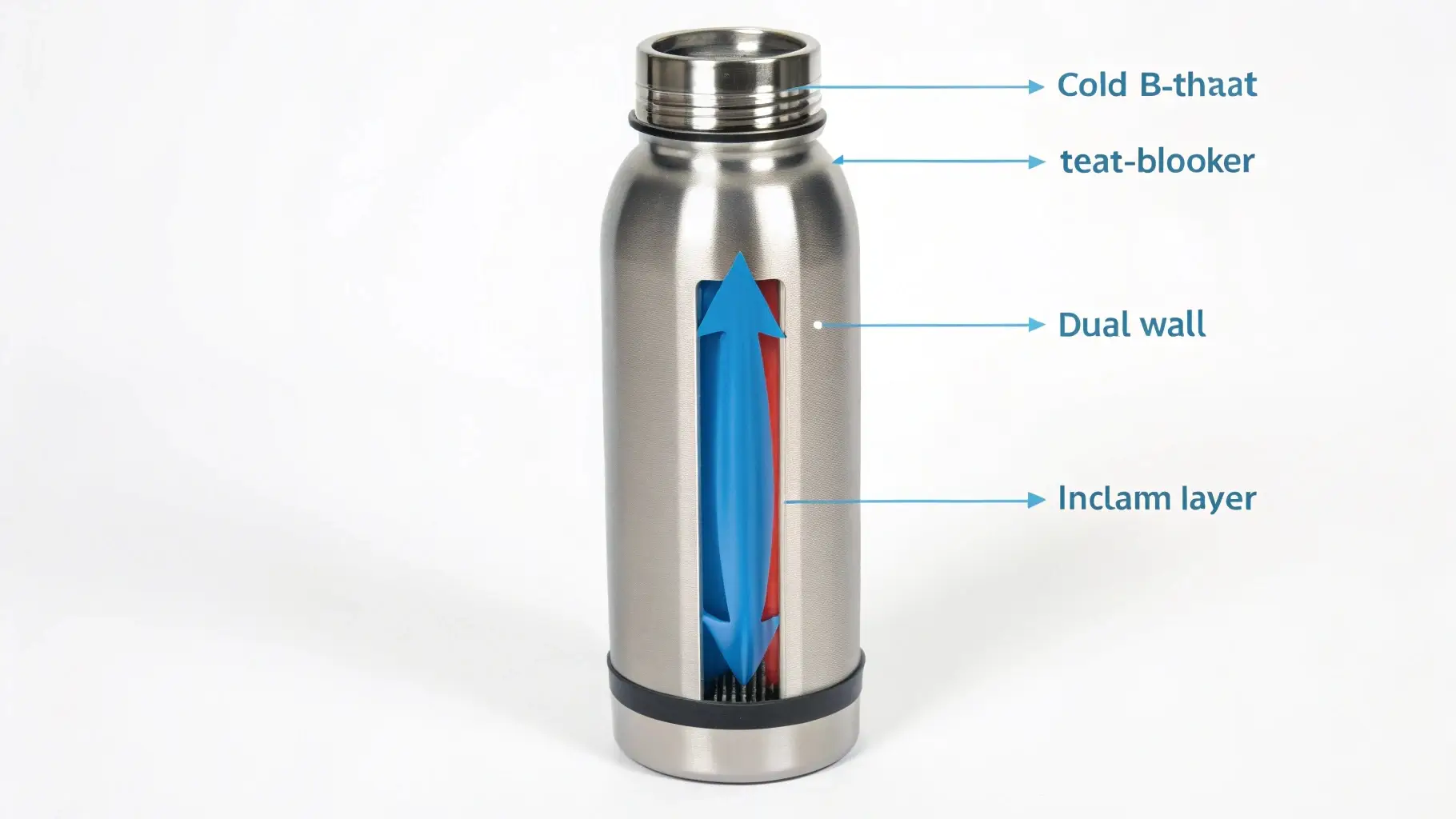
I have seen how vacuum insulation technology3 helps maintain consistent temperatures. When I started producing stainless steel water bottles at my factory in China, I learned about vacuum sealing. This process removes air between the inner and outer walls. That vacuum layer keeps heat and cold from migrating. The result is a stable interior climate for your drink. My brand, Sibottle, relies on advanced methods like automated pipe drawing lines and 3D printing to produce these bottles. We have 14+ years of expertise in the industry. Our facility includes 18000 square meters of space, five automated lines, and a daily capacity of over 800,000 products. We follow FDA and LFGB standards to ensure safety.
How The Vacuum Seal Works
A vacuum seal is the absence of air. Air transfers heat or cold easily. By removing it, we significantly reduce that transfer. This helps keep your coffee hot or your juice cold for longer. I remember talking to a colleague who tested our bottles in extreme temperatures. Whether it was a sweltering day or a frosty morning, the drink stayed at the right temperature.
Materials And Construction
Most insulated bottles use 304 or 316 stainless steel4. We focus on these metals for durability and corrosion resistance. We also incorporate food-grade gaskets to stop leaks. Our automated lines ensure consistent welds and uniform thickness. We track each step with digital systems, so we can spot issues quickly. This protects quality from start to finish.
| Component | Purpose | Benefit |
|---|---|---|
| 304/316 Stainless | Corrosion-resistant metal | Extends product life |
| Vacuum Layer | Limits heat transfer | Keeps liquids at stable temperatures |
| Food-Grade Seals | Prevents leakage and contamination | Maintains safety and cleanliness |
| Automated Production | Consistent welds and thickness | Reduces defects and speeds output |
When you have an insulated water bottle, you enjoy long-lasting temperature control. That is what sets them apart from single-wall bottles. For me, it also shows a commitment to quality. People appreciate a product that works consistently. Over time, that builds trust in your brand.
Is It Safe To Drink Water From An Insulated Water Bottle?
You want a trustworthy container. I use top-grade materials that protect your health.
High-quality insulated bottles are generally safe. They use food-safe steel and seals5 that pass global certifications like FDA and LFGB.
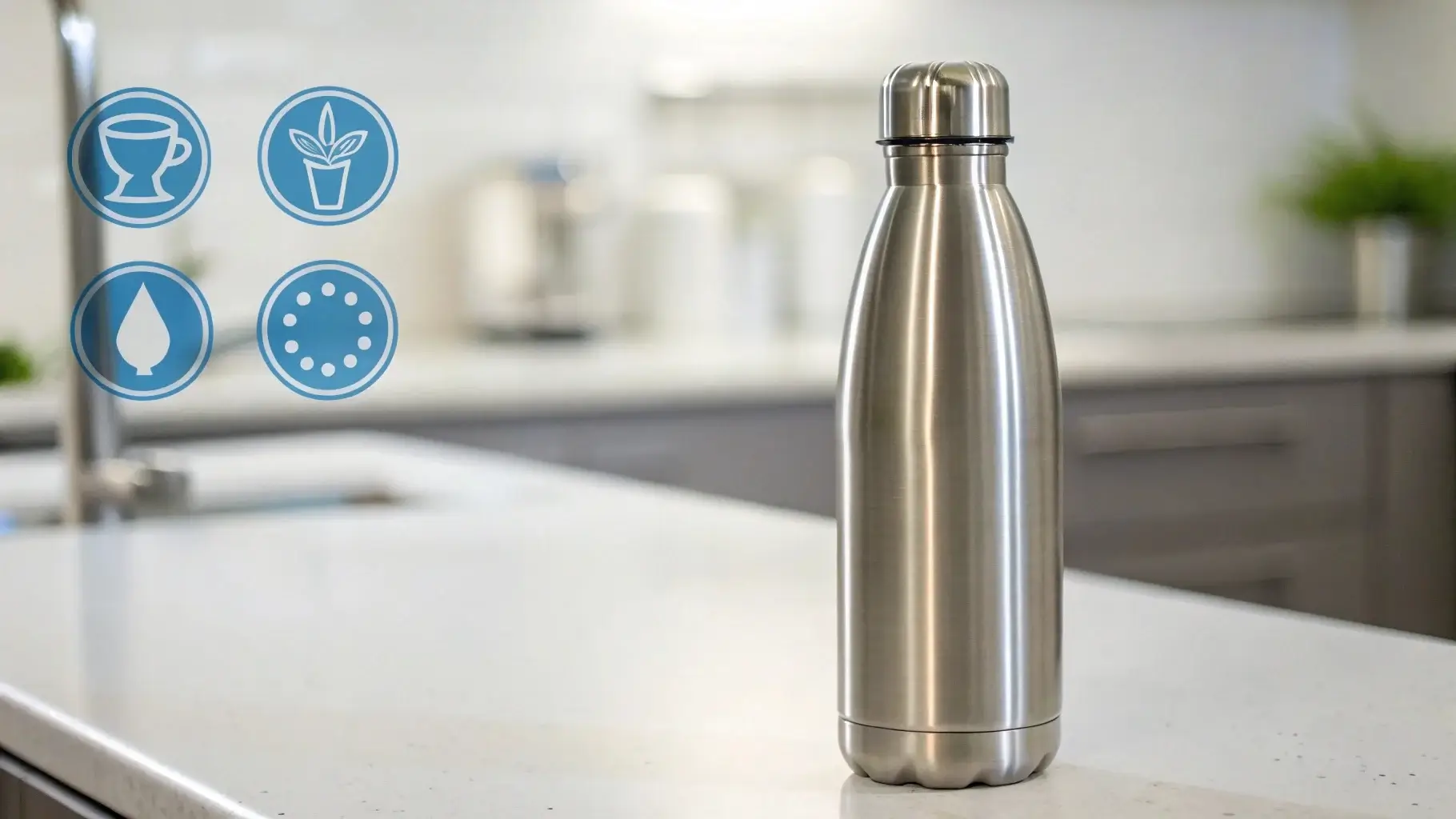
I understand that safety is crucial for drinking containers. When I began working with international clients, many asked about chemical leaching6 and taste changes. I assure them that our stainless steel bottles do not release harmful substances. They pass tests for FDA and LFGB, which confirm food safety. We also keep production in-house, so we can monitor each step. That ensures raw materials meet our strict standards.
Why Stainless Steel?
Stainless steel does not rust easily. It resists corrosion, and it does not retain flavors. That means your water tastes fresh. I once tested a prototype with hot tea. The next day, I switched to cold juice in the same bottle. There was no leftover aroma. This property makes stainless steel a reliable choice for daily use.
Our Quality Controls
We have five advanced production lines with robotic arms. We also have 3D printing equipment for customized designs. Each batch goes through multiple inspections. We check welds and measure wall thickness. We verify the vacuum seal by ensuring minimal heat transfer. We record these findings in our digital system. If something seems off, we correct it before shipping.
| Safety Aspect | Our Approach | Benefit |
|---|---|---|
| Material Selection | 304 or 316 food-safe steel | Prevents rust and chemical contamination |
| Certification | FDA, LFGB, ISO9001, BSCI | Global recognition of product safety |
| Manufacturing Oversight | Automated lines, digital tracking | Low error rates, consistent standards |
| Final Inspection | Leak tests, vacuum checks, visual scans | Ensures each item meets safety criteria |
I also pay attention to design. Curved edges and smooth interiors make cleaning easier7. That reduces bacteria buildup. Plus, we use tight-fitting lids to avoid spills. All these elements combine to produce a safe drinking experience. In my experience, an insulated water bottle made with proper materials and careful oversight protects both your health and your peace of mind.
How Long Can I Keep Water In An Insulated Water Bottle?
You want long-lasting freshness. I deliver reliable insulation that helps preserve flavor.
Insulated bottles can maintain cold drinks for up to 24 hours8. They can also keep hot drinks warm for about 12 hours, depending on design.
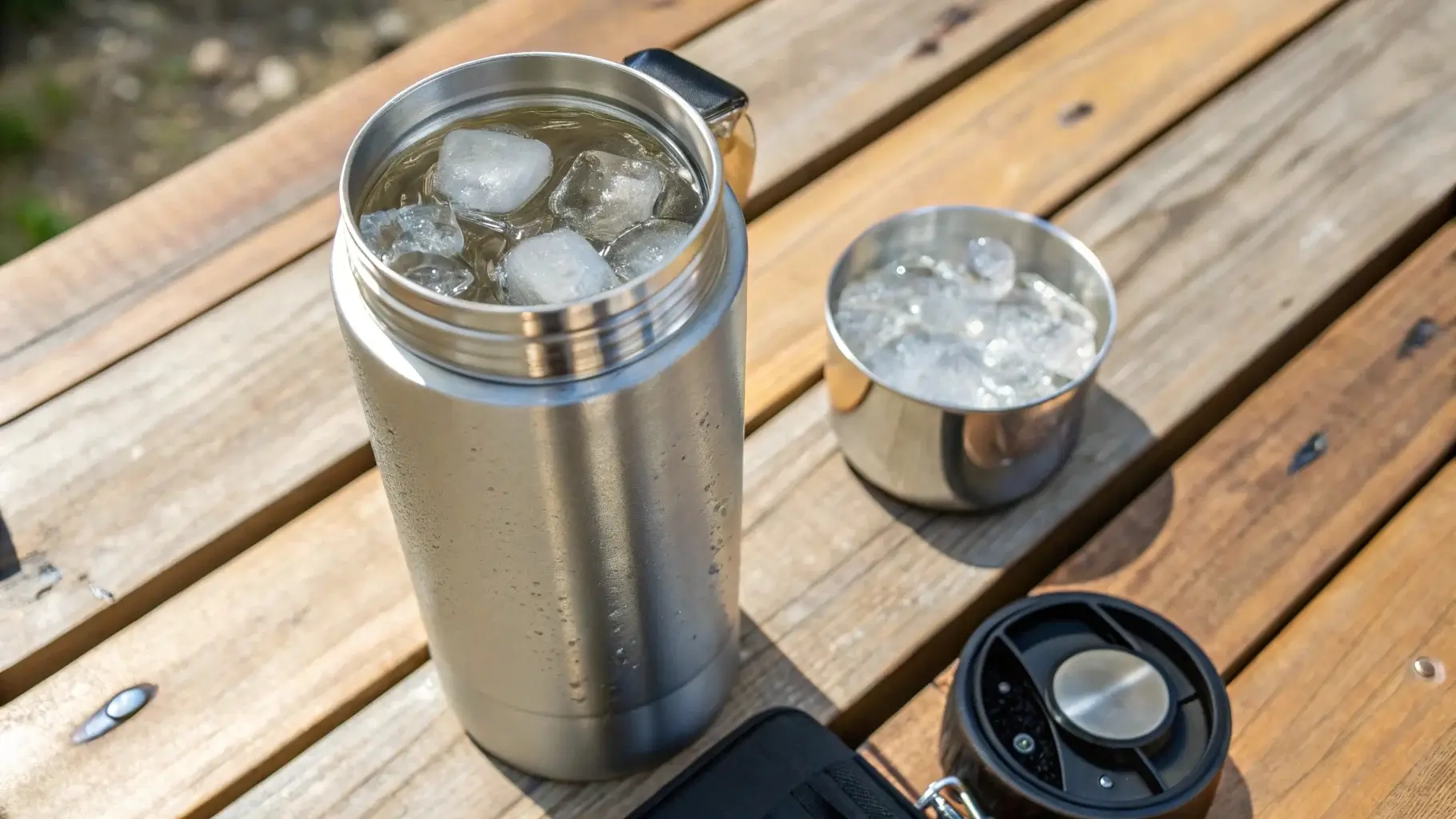
I remember testing the holding time by pouring iced water into one of our double-wall vacuum bottles. After 12 hours, there was still ice floating inside. By 24 hours, the drink was chilled, but the ice had melted. That impressed me, because it showed real insulation power. We use a vacuum layer between two stainless steel walls. This air-free space prevents outside temperatures from affecting what is inside.
Factors That Affect Holding Time
- Ambient Temperature: Hotter environments reduce the time your drink stays cool. Colder surroundings extend it.
- Initial Beverage Temperature: Pre-chilling or pre-heating your bottle can improve results.
- Bottle Quality: Thicker insulation often leads to better performance.
- Lid Seal: A good lid traps temperature. A loose one allows heat transfer.
When we produce these bottles, we set strict controls for the vacuum process. Even a minor leak can compromise insulation. We rely on robotic assembly lines for consistency. That also helps us achieve lead times of 20 to 25 days, even for large orders.
My Personal Observations
I enjoy using these bottles during outdoor events or trade shows. I fill them with cold water. Hours later, I still find the drink refreshing. For hot drinks, I usually keep them in the bottle for no more than 8 to 10 hours, just for taste preferences. Some people go up to 12 hours. Our tests show they stay warm enough for comfortable sipping.
| Variable | Impact on Temperature Retention | Tips for Improvement |
|---|---|---|
| Outside Heat/Cold | Speeds or slows heat transfer | Store bottle away from direct sunlight |
| Beverage Start Temp | Determines baseline warmth or chill | Pre-heat or pre-cool the interior first |
| Vacuum Quality | Ensures minimal conduction or radiation | Look for reliable brands and certifications |
| Usage Frequency | Frequent openings let heat escape | Open only when needed |
From my standpoint, an insulated water bottle is an investment in convenience and taste. You avoid wasting ice cubes or reheating drinks all day. That saves time and energy. It also shows that you value efficiency, which helps your brand appear reliable and customer-focused.
What Should You Not Put In An Insulated Bottle?
You want to maintain quality, but certain liquids can harm your bottle. I explain which ones to avoid.
Carbonated drinks and acidic or thick liquids9 can damage your insulated bottle or reduce its effectiveness.
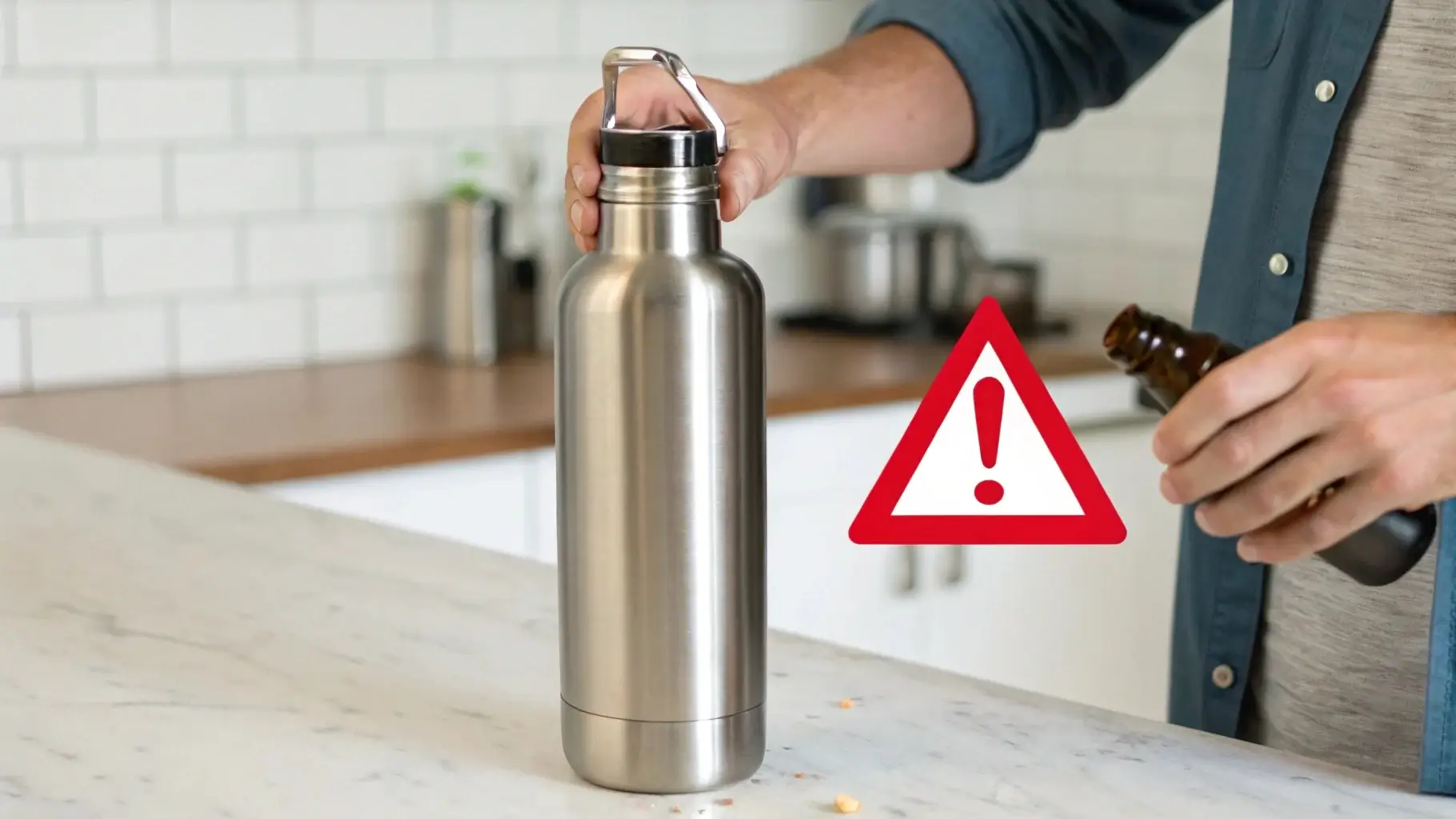
I learned about this when a colleague stored carbonated soda in a sealed insulated container. The buildup of gas increased internal pressure. Opening the lid caused a messy burst. The vacuum seal is strong, but it is not designed for releasing carbonation. Fermented drinks can also produce gas. That causes potential leaks or bottle warping.
Why It Matters
Stainless steel resists rust, but it can still be affected by acidic or highly reactive liquids if left for long. I recommend caution with acidic juices or vinegars. Occasional use is fine, but repeated exposure without cleaning can cause minor discoloration. Thick soups are another issue. They can get trapped in the corners of your bottle, leading to bacterial growth. Cleaning a narrow-neck bottle filled with chunky soup is a challenge.
My Cleaning Routines
To keep your bottle safe, I rinse it thoroughly with warm water and mild soap after each use. For deeper cleaning, I use a mixture of baking soda and water10. I let it sit for a few minutes, then scrub gently with a soft brush. This helps remove any lingering odors or flavors. My factory ensures wide-mouth designs on some models to make cleaning easier.
| Liquid Type | Risk | Recommendation |
|---|---|---|
| Carbonated Beverages | Pressure buildup | Avoid sealing them for long periods |
| Fermented Drinks | Ongoing gas release | Store in a vented container |
| Highly Acidic Juices | Possible discoloration over time | Rinse quickly, avoid extended contact |
| Thick Soups/Stews | Hard to clean, potential bacteria | Use a container with a wide opening |
Based on my experience, using an insulated bottle for water, tea, coffee, or simple fruit-infused blends is best. If you need to store complex liquids, choose a suitable container. This keeps your insulated bottle performing well and prolongs its lifespan. Your brand image also benefits when you advise customers on proper usage.
Do Insulated Water Bottles Keep Cold?
You want long-lasting chill. I can confirm that insulated bottles help maintain cold temperatures for extended periods.
Insulated bottles reduce external heat transfer11 and keep drinks cold for many hours. Dual-wall construction is the key.
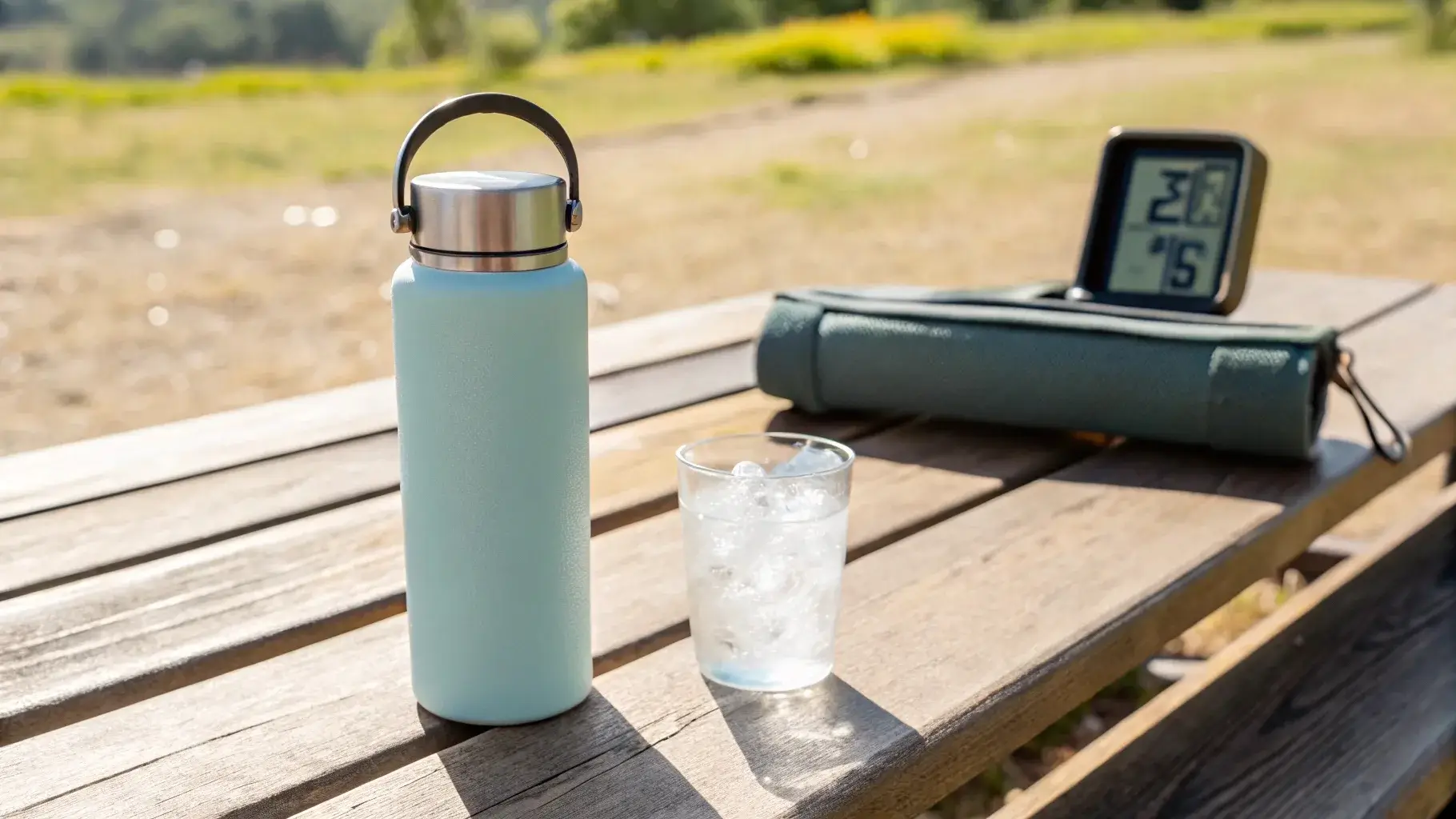
I have tested this many times on hot days. I fill my Sibottle product with icy water, then head out. Hours later, it still feels cold. That is because the vacuum layer in our double-wall design prevents the surrounding air from warming the liquid. In my factory, we use robotic assembly lines to seal these bottles properly. That consistent manufacturing helps preserve the vacuum space.
Temperature Retention In Detail
Heat usually travels through conduction, convection, or radiation. Vacuum insulation tackles all three methods by removing the medium (air) that helps transmit heat. A reflective inner coating12 can also lower radiant heat exchange. When we finalize a product, we measure its performance over set durations. We note how many degrees the liquid warms. If it warms too quickly, we check for leaks or improper sealing.
My Advice On Maximizing Cold Retention
I recommend pre-chilling the bottle13 by rinsing it with cold water or storing it in a refrigerator before use. That way, the metal walls are already cool. Also, keep the lid closed when not in use. Heat can sneak in every time you open the bottle. If you want ice to last longer, choose a bottle with a narrower opening. Less surface area is exposed to warm air.
| Retention Factor | Description | Tip |
|---|---|---|
| Double-Wall Vacuum | Core insulation method | Ensure the vacuum layer is intact |
| Reflective Layer | Blocks radiant heat transfer | Pick products with proven testing |
| Lid Seal | Stops heat from entering through the lid | Keep the lid shut as much as possible |
| Pre-Chilling | Lowers starting temperature of the interior | Rinse or cool the bottle beforehand |
For me, an insulated water bottle is a practical companion. It keeps me hydrated with cold water, even after hours in a warm environment. That reliability also enhances brand loyalty. People value consistent performance, and insulated bottles deliver on that expectation.
Conclusion
Insulated holders and bottles protect temperatures, ensure freshness, and support convenience. They help you and your customers enjoy better hydration every day.
-
Keeps drinks cold and hands dry with temperature control and grip ↩
-
Dual-wall insulation helps maintain drink temperature for hours ↩
-
Vacuum sealing reduces heat transfer in insulated drinkware ↩
-
304/316 stainless steel offers rust resistance and safety ↩
-
Food-safe materials prevent contamination and support long-term use ↩
-
Learn how quality bottles prevent chemical leaching into beverages ↩
-
Easy-to-clean interiors reduce bacteria and lingering odors ↩
-
Insulated bottles maintain cold for 24h, hot for 12h on average ↩
-
Avoid liquids that create gas or corrode metal over time ↩
-
Baking soda is a safe, natural cleaner for stainless bottles ↩
-
Vacuum insulation blocks outside heat from reaching contents ↩
-
Reflective coatings reduce heat gain through radiation ↩
-
Pre-chilling the bottle improves temperature retention ↩

